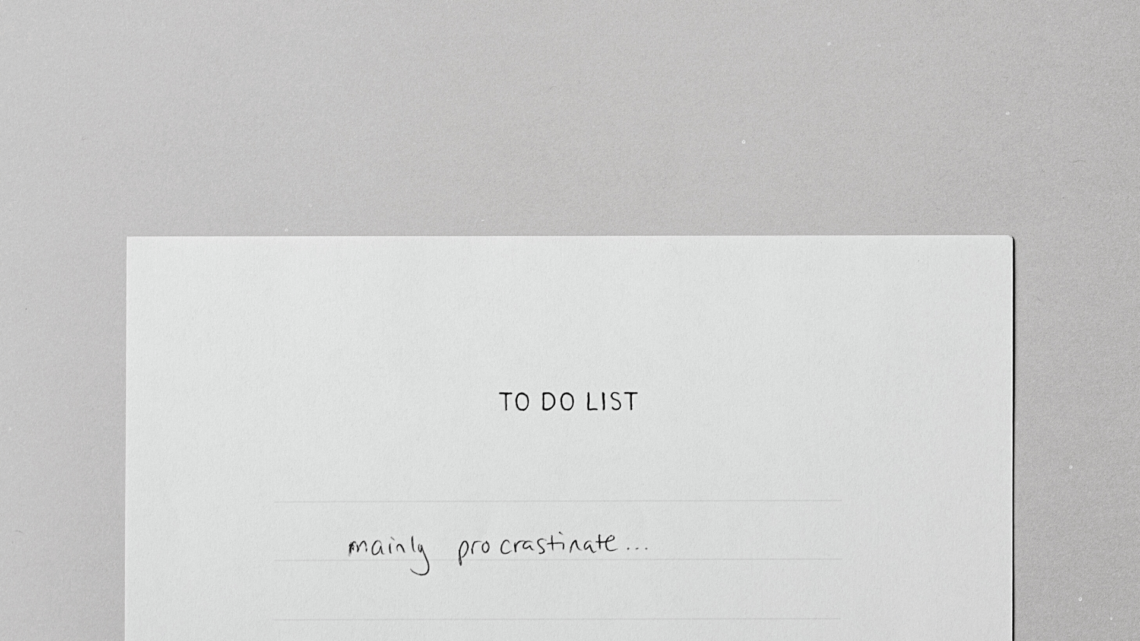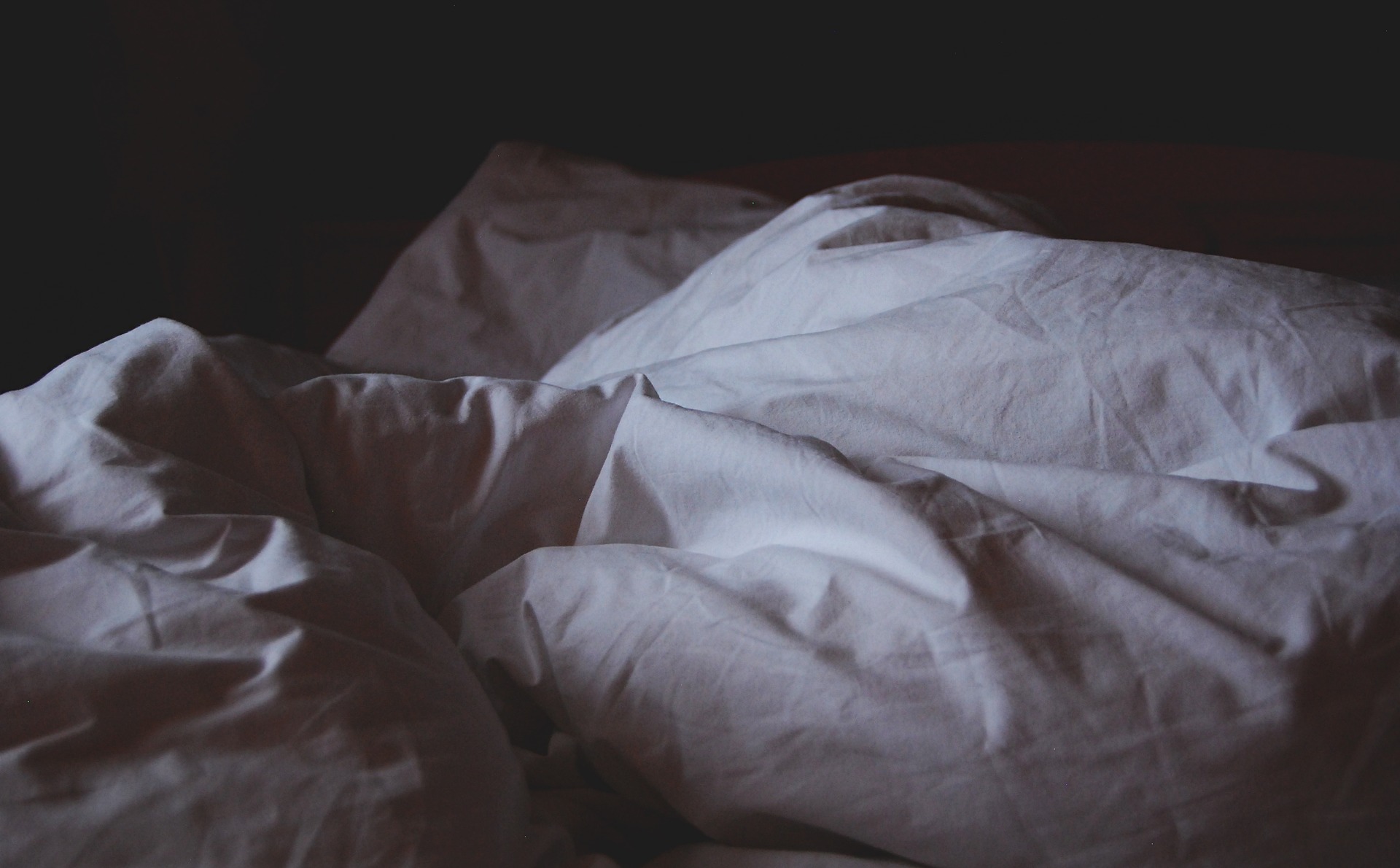
Procrastination Revisited: The Effect of ADHD
When I started this blog a few years ago, one of my most popular posts was about procrastination. In that post, I argued that I procrastinate to deal with the anxiety that accompanies decision making. (You can read the original post here.) What I didn’t know, though, was that I had ADHD.
Everything I wrote in that post is still true. Increasingly difficult tasks still cause me increasingly high levels of anxiety. I still find it best to start with an easy task involving little to no decision making. That helps me get the ball rolling. But, now I know that there’s more to the procrastination story for me.
During my hiatus from writing, I was diagnosed with ADHD (inattentive type). And, it turns out, this was the missing puzzle piece. ADHD fully explains why I struggle with procrastination and decision making in the first place. (You can read more about the symptoms of ADHD in this article.)
ADHD & Motivation
For those of you who don’t know, there are a few hallmarks of ADHD that make certain tasks particularly difficult. First of all, people with ADHD have an interest-based nervous system (read more about the ADHD brain here). We are actually pretty good at tasks that interest us. In fact, sometimes we can spend hours at a time focused on one particular thing (a state called hyperfocus, which this article explains nicely). When it comes to tasks that don’t interest us, though, it’s a different story entirely.
Neurotypical Functioning
Most neurotypical people are able to motivate themselves to do undesirable or difficult tasks using three factors: importance, rewards, and consequences. These folks can prioritize less interesting but more important tasks over activities that are more fun but less necessary. For example, neurotypicals can force themselves to make a list and get groceriesbecause they know it is important to have food in the house.
Neurotypicals are also able to motivate themselves to complete a task using rewards or incentives. For example, they might decide to get a latte from Starbucks as a treat on the way home from getting groceries, which is just the push they need to get out the door. Finally, they might be motivated to complete the task in order to avoid the consequences of not doing so. So, for example, they get groceries so they don’t have to spend money from their discretionary budget on buying lunch at work the next day.
ADHD Functioning
These motivators don’t work for people with ADHD. Uninteresting but necessary tasks remain undone for people with ADHD, like myself, until something makes them stimulating enough. For me, tasks like doing the dishes, washing my laundry, or picking up clutter in the house feel physically impossible to do. That is, until they reach a crisis point:
- For the dishes, that means there either there are no clean dishes left to use or the kitchen sink has become unusable because there are too many dishes in the way.
- Similarly, to do laundry I have to actually be completely out of clean clothes to wear. Definitely don’t ask me to put clean laundry away, though. I have been known to go weeks pulling clean clothes to wear out of a laundry basket. That is, until I get so fed up with not being able to find a particular item that I feel compelled to finally put things away.
- And, visual clutter in my home makes me feel stressed and anxious. Every now and then, once the clutter builds up, I hit my breaking point. Then I go on a rampage. I pick up what seems like a thousand stray toys from the floor. I clear stacks of miscellaneous junk off the kitchen counter. Then, in a whirlwind, I send them back to their homes (or the garbage!).
ADHD & Organization
Another hallmark symptom of ADHD is disorganization. Disorganization can manifest both externally (in the form of a messy, cluttered house or workspace) and internally (messy thoughts). In my first procrastination post, I talked a lot about problems with decision making, especially during graduate school. Looking back, I can see that a lot of my problems were due to an inability to organize my thoughts.
Back when I was writing papers, I had a lot of information I needed to convey. It had to be done in an orderly and convincing way. I struggled to figure out the best order to put things in, though. I had read hundreds of research articles, all of which were relevant. Somehow, I had to touch on all of those articles, but I just didn’t know where to start. Unlike doing a math problem, there was no single correct answer. I could arrange my discussion of the various, interrelated topics in any number of different ways. Every time I would try to start an outline, a thought about how to arrange things differently would pop into my head.
Eventually, it would become so overwhelming that I would give up, vowing to return to it later. Well, you can guess what happened. Every time I would think about getting started on the paper again, I would remember how many different options there were. Little tidbits of information would float around randomly in my brain. I would remember how difficult it was to choose a direction. Feelings of discomfort would begin to bubble up, and I would inevitably put it off again.
The cycle would repeat, over and over, until I ran out of time. My feelings of being overwhelmed by the choices I needed to make turned into panic. And, that panic would lead to a complete emotional meltdown, ugly crying and all. Only after the meltdown did I achieve some clarity and the ability to organize my thoughts.
ADHD & Emotion Regulation
The last bit brings me to a critical piece of the puzzle I had never considered before. One piece of the executive dysfunction that is a hallmark of ADHD is problems with regulating emotions. People with ADHD tend to experience intense emotions. These feelings are often more intense than the situation warrants. Happy situations can produce extreme positive emotions, while unpleasant situations produce extreme negative emotions.
When translated into a real life context, this failure to be able to deal with negative emotions means people with ADHD can find unpleasant tasks to be downright dreadful. For me, trying to make myself wash the dishes (before there are literally none left to use) might as well be the same as volunteering to receive electric shocks. Ok, that might be an exaggeration, but you get the point. It’s actually painful.
Every time I sat down to work on a paper in grad school, trying to organize my thoughts and choose a starting point actually caused me anguish. Folding my laundry and putting it away, in my mind, is just as miserable a task as waiting in line at the DMV for hours on end. Who wants to do that?!
(If you want to read more on how emotion regulation problems in ADHD contribute to procrastination, check out this article.)
The Takeaway
Now that I know my procrastination stems from avoidance of the intense negative emotions that accompany unpleasant tasks, I can understand why only certain methods work for me to get things done.
As I mentioned in my first post on procrastination, my only hope of accomplishing unpleasant tasks is by using what I called the toe-dip method. Imagine the task at hand is an icy cold swimming pool. The only way I can manage my negative emotions is by first dipping a toe into that pool. That means I have to start with some simple aspect of the task that has little to no negative association. That might be just opening the document I’m working on. Or it could be simply opening the notes app on my phone and typing in “Grocery List.”
From there, I can move onto the next easy and relatively painless thing. I can keep doing small steps until, eventually, the ball gets rolling, ideas start popping into my mind, and the task is finished before I know it.
For me, this is the only way. For someone with ADHD, tackling the hardest thing first is designated to fail. The negative emotions are simply too intense, overwhelming, and uncomfortable. Facing those feelings head-on is like standing in traffic on a busy highway and just waiting to be hit by a truck.
So, if you’re like me and you struggle to accomplish unpleasant tasks, remember the toe-dip- method. Start small and work your way through. Or, if that still fails to help you get your house clean, just go ahead and hire a cleaning lady like we did!



